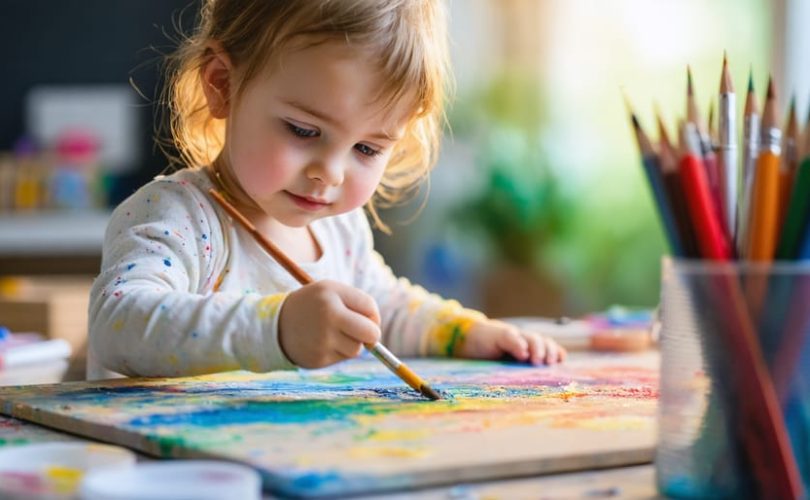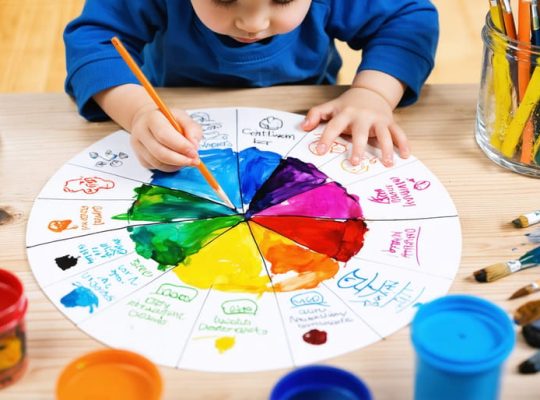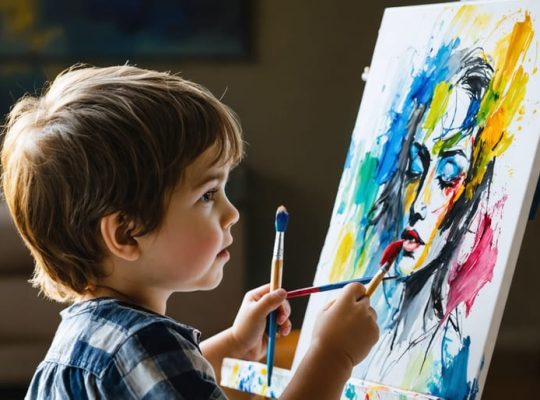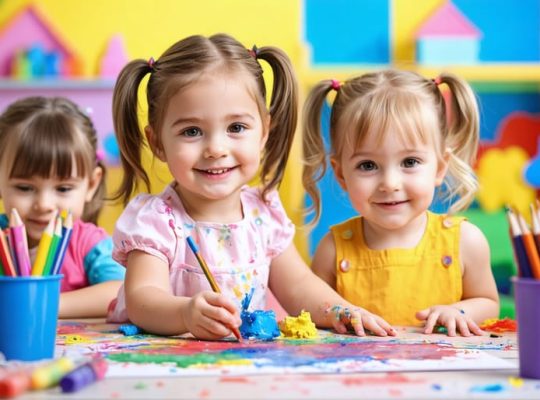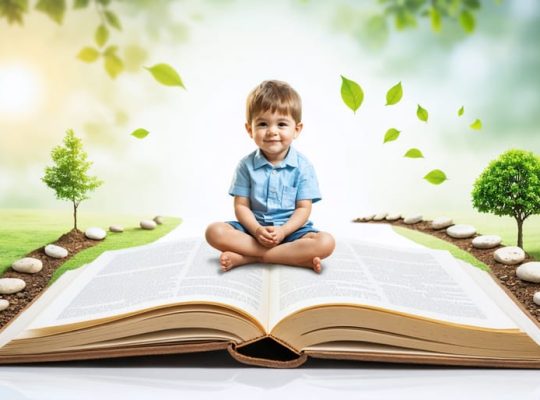Imagine a child sitting before a blank canvas, paintbrush in hand, ready to transform their inner world into vibrant colors and shapes. Expression art therapy harnesses this natural creative impulse, offering a powerful pathway for emotional development in children who struggle to verbalize their feelings. Through guided artistic expression, young minds find freedom to process complex emotions, trauma, and daily challenges without the pressure of finding the “right” words.
Unlike traditional talk therapy, art therapy creates a safe space where children naturally express themselves through colors, shapes, and textures. Whether it’s painting their anger in bold red strokes, sculpting their fears into tangible forms, or drawing their hopes in bright yellows and blues, this therapeutic approach gives voice to feelings that might otherwise remain locked inside.
Parents and caregivers often discover that art therapy opens new channels of communication with their children, revealing insights that conversation alone might miss. This gentle yet powerful approach has helped countless young people process everything from everyday anxieties to profound life changes, building resilience and emotional awareness along the way.
How Art Therapy Helps Children Express Their Feelings
The Power of Non-Verbal Communication
Sometimes, children struggle to find the right words to express their complex emotions. Art provides a powerful alternative channel for communication, allowing them to share their feelings, fears, and experiences without relying on verbal expression.
Through drawing, painting, or sculpting, children can naturally convey what’s in their hearts and minds. A child who’s anxious about starting school might draw themselves very small on the paper, while a child processing grief might use darker colors to express their sadness. These artistic choices often reveal more about their emotional state than they could ever say out loud.
Art therapists often observe that children become more relaxed and open when creating art, as it removes the pressure of having to “explain” their feelings. This non-verbal expression can be particularly beneficial for children who are shy, have experienced trauma, or face communication challenges.
Consider Sarah, age 7, who struggled to talk about her parents’ divorce. Through her artwork, she began drawing two separate houses connected by a rainbow bridge, helping her therapist understand her hopes for maintaining connections with both parents.
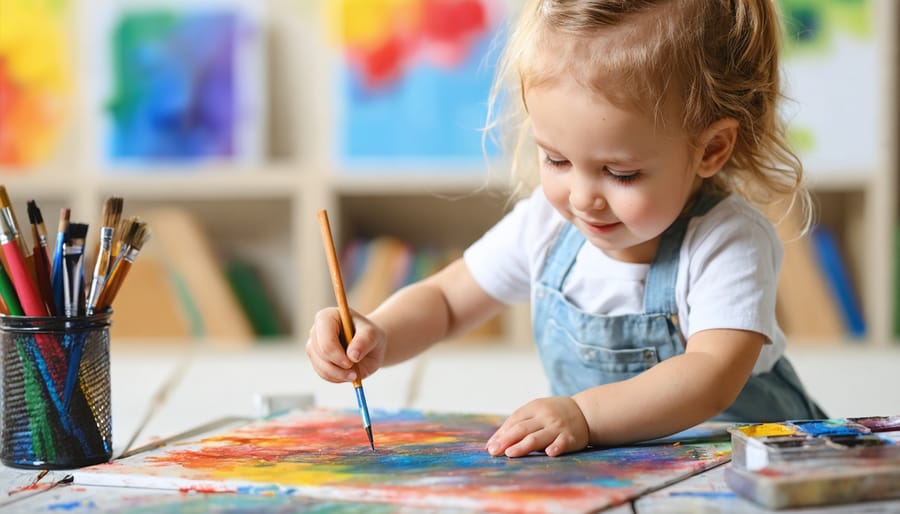
Creating Safe Spaces Through Art
Art therapy creates a unique sanctuary where individuals can safely explore their innermost thoughts and feelings without the pressure of words. Unlike traditional talk therapy, the art-making process naturally lowers defenses and anxiety, allowing emotions to flow more freely onto paper or canvas.
In this protected environment, children and adults alike find freedom to express difficult experiences, trauma, or complex emotions they might struggle to verbalize. The simple act of choosing colors, making marks, or molding clay becomes a bridge to deeper emotional understanding.
As Sarah Chen, a registered art therapist, explains, “When clients enter the art therapy space, they often experience a sense of relief. There’s no right or wrong way to create, which removes the fear of judgment that can block emotional expression.”
The physical setup of an art therapy space also contributes to this sense of safety. Comfortable seating, organized art supplies, and gentle lighting create an atmosphere that invites creativity and vulnerability. This carefully cultivated environment helps participants feel secure enough to explore challenging emotions at their own pace, leading to meaningful breakthroughs in their healing journey.
Common Art Therapy Techniques for Children
Drawing and Painting Exercises
Drawing and painting offer powerful art therapy techniques that can help children express and process their emotions safely. One effective exercise is emotion color mapping, where children choose colors that represent different feelings and create abstract paintings. For example, they might use red for anger, blue for sadness, or yellow for happiness.
Free drawing sessions allow children to express themselves without constraints. Providing simple prompts like “Draw how your day feels” or “Paint what makes you happy” can help children who aren’t sure where to start. Another helpful activity is the feelings journal, where children can draw or paint daily to track their emotional journey.
The mandala drawing exercise helps promote focus and calm. Children can create circular patterns using colored pencils or markers, which often has a meditative effect. For processing difficult emotions, the scribble technique lets children release tension through random marks on paper, then find and enhance shapes within their scribbles.
Working with clay or finger paints adds a sensory dimension that can be particularly soothing for anxious children. The physical contact with art materials often helps ground them in the present moment while expressing their feelings through creative work.
Remember to create a judgment-free space where children feel safe to express themselves through these activities. The focus should be on the process rather than the final product.
Sculpture and Clay Work
Working with clay and sculptural materials offers a uniquely powerful avenue for emotional expression in art therapy. The tactile nature of these materials allows children and adults alike to physically connect with their feelings, literally giving shape to their inner experiences. As children knead, mold, and manipulate clay, they often naturally release tension and anxiety through the physical activity.
Many art therapists have observed that the three-dimensional aspect of sculpture work provides additional therapeutic benefits. Unlike drawing or painting, sculptural pieces can be viewed from all angles, touched, and modified, offering a more complete form of expression. For instance, a child struggling with complex emotions might create a figure that represents their feelings, being able to physically shape and reshape it until it accurately reflects their internal state.
The malleability of clay makes it particularly effective for processing difficult emotions. Children who find it challenging to verbalize their feelings often discover that squeezing, pounding, or smoothing clay helps them express and release strong emotions like anger or frustration in a safe, constructive way. The permanent nature of fired clay pieces can also provide a sense of accomplishment and concrete evidence of emotional progress.
Art therapist Sarah Martinez notes, “When children work with clay, they’re not just creating art – they’re developing emotional awareness through sensory experience. The simple act of transforming a shapeless lump of clay into something meaningful can be incredibly empowering.”
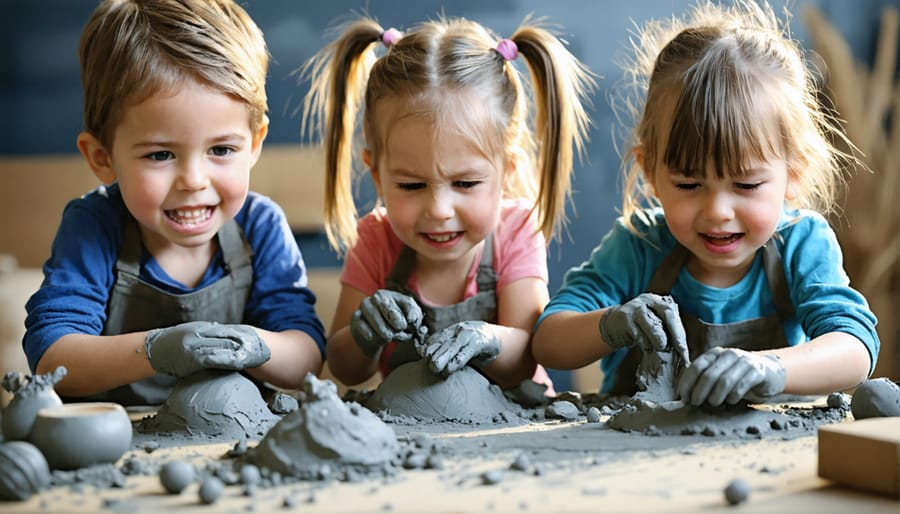
Collage and Mixed Media Projects
Collage and mixed media projects offer a unique therapeutic avenue where different materials come together to represent the complex layers of our emotional experiences. By combining various elements like magazine cutouts, photographs, fabric scraps, and found objects, children can create meaningful representations of their feelings that might be difficult to express through words alone.
When a child feels overwhelmed by multiple emotions, working with different materials can help them compartmentalize and process these feelings. For instance, rough textures might represent anger, while soft materials could symbolize comfort or safety. The act of selecting, arranging, and combining materials becomes a metaphor for organizing thoughts and emotions.
Dr. Sarah Chen, an art therapist with 15 years of experience, shares, “I’ve seen children use torn paper to express frustration, while carefully placing glitter in certain areas to show hope or joy. The beauty of mixed media is that it allows for both structured and spontaneous expression.”
To create a supportive environment for mixed media exploration, provide a variety of materials and let children lead the creative process. They might layer papers to hide difficult emotions underneath, or proudly display certain elements to celebrate positive feelings. The physical act of cutting, pasting, and arranging helps develop fine motor skills while simultaneously processing emotional experiences.
Remember that there’s no “right way” to create mixed media art. Each piece is as unique as the individual creating it, reflecting their personal journey and emotional landscape.
Supporting Your Child’s Emotional Expression Through Art
Creating an Art-Friendly Environment
Creating a safe and welcoming environment is essential for effective art therapy sessions. When creating an art-friendly space, start by choosing a well-lit area that’s easily cleanable and comfortable. Natural light is ideal, but warm artificial lighting can work just as well.
Storage is crucial – organize art supplies in clear containers at eye level, making materials easily accessible while maintaining order. Consider using child-height tables and chairs, and protect surfaces with washable tablecloths or newspaper. Display children’s artwork respectfully, perhaps with a dedicated wall space or clothesline gallery.
Keep basic supplies readily available: paper of various sizes and colors, washable markers, crayons, colored pencils, and child-safe scissors. As children become more comfortable, gradually introduce new materials like modeling clay, watercolors, or collage materials.
The space should feel inviting but not overwhelming. Avoid clutter and maintain a calm atmosphere with neutral wall colors. Some children work better with background music, while others prefer quiet – be flexible and responsive to individual needs.
Remember to create clear boundaries and rules for the space, such as washing hands before and after sessions, treating materials with respect, and cleaning up together afterward. This structure helps children feel secure while expressing themselves freely through art.
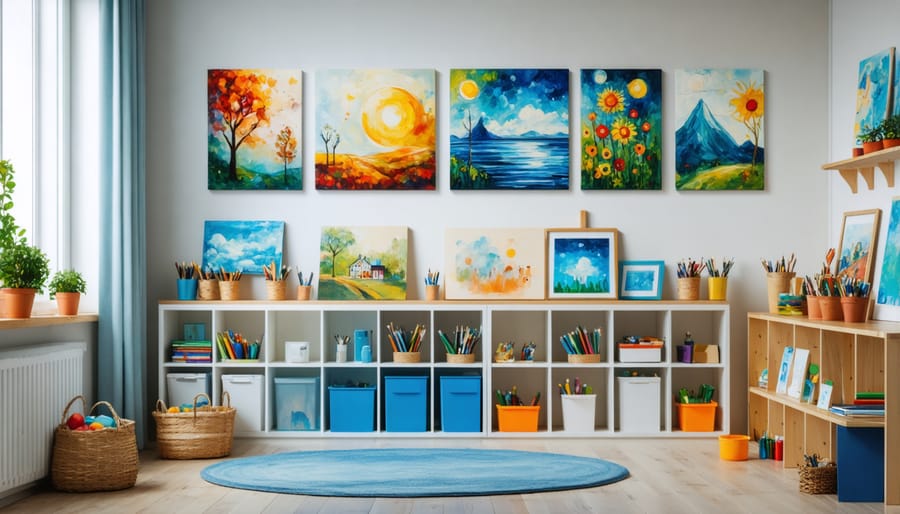
Responding to Your Child’s Artwork
When your child presents you with their artwork, your response can significantly impact their emotional expression and self-confidence. Rather than simply saying “That’s beautiful!” try asking open-ended questions like “Can you tell me about your picture?” or “What inspired you to choose these colors?” These questions validate their creative process and encourage them to express their feelings.
Notice the elements that stand out in their artwork – bold colors might indicate strong emotions, while gentle strokes could reflect calmness. If your child draws dark or concerning images, remain calm and curious. Ask them to share the story behind their art without judgment. This opens the door for important conversations about their feelings and experiences.
Remember to focus on the process rather than the final product. Comments like “I see you worked really hard on this” or “You found a creative way to show your feelings” emphasize effort and emotional expression over artistic perfection.
Create a designated space to display their artwork, showing that you value their emotional expression. This can be a simple cork board or a special folder. When your child sees their artwork being honored, they’re more likely to continue using art as a healthy outlet for their emotions.
If concerning themes persist in their artwork, consider consulting a child therapist who can help interpret and address underlying emotional needs.
When to Seek Professional Art Therapy
While art can be therapeutic in many settings, there are specific situations when seeking professional therapy services through a qualified art therapist becomes particularly beneficial. Parents and caregivers should consider professional art therapy when their child:
– Shows persistent emotional or behavioral challenges that affect daily life
– Has experienced trauma or significant life changes
– Struggles to express feelings through words alone
– Exhibits withdrawal from usual activities or social interactions
– Demonstrates changes in sleep patterns or appetite
– Shows signs of anxiety, depression, or overwhelming stress
Sarah Martinez, a licensed art therapist, shares: “Children often communicate their inner worlds more effectively through art than words. Professional art therapy provides a structured, safe environment where these expressions can be properly understood and addressed.”
Art therapy can be especially valuable when:
– Traditional talk therapy hasn’t been effective
– A child has developmental delays or communication difficulties
– There’s a need for processing complex family dynamics
– School performance or peer relationships are suffering
– A child has experienced loss or grief
– Physical illness or chronic conditions are present
Remember that seeking professional help isn’t a sign of failure – it’s a proactive step toward supporting your child’s emotional well-being. Professional art therapists have specialized training in both therapeutic techniques and artistic processes, allowing them to:
– Interpret artwork in a clinical context
– Design appropriate therapeutic interventions
– Create a safe space for emotional expression
– Work collaboratively with other healthcare providers
– Develop personalized treatment plans
– Track progress through artistic development
Early intervention often leads to better outcomes, so don’t hesitate to reach out when you notice concerning changes in your child’s behavior or emotional state. Many insurance plans now cover art therapy, making it more accessible to families who need support.
Art therapy offers a powerful and accessible way for children to express their innermost feelings and navigate life’s challenges. As we’ve explored throughout this article, the combination of creative expression and therapeutic guidance can help children develop emotional awareness, build resilience, and find healthy outlets for their feelings.
Remember that you don’t need to be an art therapist to encourage creative expression at home. Simply providing a safe space, basic art supplies, and supportive presence can make a significant difference in your child’s emotional development. Whether it’s through finger painting, clay modeling, or simple doodling, every artistic endeavor offers an opportunity for emotional growth and connection.
When children feel heard and understood through their artwork, they develop greater self-confidence and emotional intelligence. The skills they learn through artistic expression – such as problem-solving, self-expression, and emotional regulation – will serve them well throughout their lives.
Consider setting aside regular “art time” in your family routine. Create alongside your child, ask open-ended questions about their artwork, and most importantly, celebrate their creative process rather than focusing on the final product. By embracing art as an emotional outlet, you’re giving your child a valuable tool for lifelong emotional well-being and self-discovery.
Remember, every child’s artistic journey is unique. Trust the process, stay patient, and watch as your child grows more confident in expressing themselves through art.

